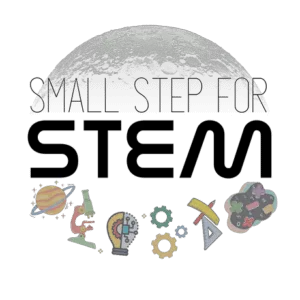Disclosure: this post contains affiliate links, which means I may receive a commission if you click a link and purchase something at no extra cost to you. Please check out our policies page for more details.
for more details.
This ancient device used for keeping time is what we’ll be making today.
The water clock, or clepsydra, was invented thousands of years ago to keep track of time passing. It is a device that drips water from one section to another, and time is recorded as the bottom section fills.
Need the time? Let’s build a water clock!

How to make the Water Clock experiment
Supplies you will need
For this experiment, you’ll need:
- Clear, plastic 2-liter bottle (labels removed)
- Marker
- Scissors

- Water
- Food coloring

- Optional: small screwdriver

Before you start
Please watch hands while cutting the bottle and the bottle cap!
Instructions
Here is how to do this experiment with your child:
Step 1: Cut the 2-liter bottle
First, cut the 2-liter bottle right above the halfway point.

Step 2: Cut a small hole in the cap
Using a small screwdriver, a drill, or the end of your scissors, make a small hole in the bottle cap of the 2-liter bottle. Please watch your hands while making the hole!
Remember: the larger the hole, the faster the water will transfer. If you want your water clock to last for several minutes, you will need to make a very small hole! If you make too large of a hole, you could try cover the hole with some duct tape and puncturing a very small hole in tape to make it smaller.
For reference, the hole I made in the cap below made the water clock empty in about a minute.

Step 3: Place top half of 2-liter into bottom half
Place the cap back on the 2-liter bottle, then place the top half of the bottle upside down into the bottom half.

Step 4: Pour water into top half of the water clock
Now we’re going to prepare the water to dump into the top half of the water clock.
In a separate container, add about 3 cups of water and a few drops of food coloring (so it’s easier to track the water levels).
You could also add the water and food coloring to the bottom vessel and mix it there. Then, plug the hole in the cap with your finger, pour the water into the top vessel, and set it into the bottom vessel again.

Step 5: Take measurements
Depending on the hole you made in the cap, determine the increments you want to mark on the bottle.
For example: our cap has a hole that is a little larger, so we marked it every ten seconds.
Continue this until all of the water has drained from the top vessel to the bottom.

Step 6: Use your new water clock for time measurement!
Once you have added the marks to the bottom vessel, your water clock is ready for use!
Next time you have to set a timer for something, just dump the water from the bottom vessel back up to the top (be sure to plug the hole in the cap first!) and start your timer.
The STEM behind the Water Clock experiment
This experiment teaches:
- The passage of time
- History of timekeeping
- Gravity
How it works
The water clock works by cups of water gradually dripping from one vessel to another (in our case, the top half of a 2-liter bottle to the bottom through a hole in the cap).
As the water drips to the bottom vessel, we mark the bottle as each minute (or other measurement of time) passes. Once all of the water is in the bottom vessel, it’s time to start using your water clock!
The passage of time
The passage of time can be a tough concept to grasp for kids. What does a minute feel like? An hour?
This experiment gives kids a good visual on the passage of time, so they can see how long a minute can take.
Since you can see the water dripping down into the bottom half of the clock, it gives kids a visual of time passing. When you mark each minute on the bottom half as the water drips, it provides a physical representation of a minute.
History of timekeeping
Many relied on the sundial to help keep track of time, but what do you do when it’s cloudy? Or nighttime? Enter, the water clock!
The water clock told time by water moving from one vessel to another through a small hole (so the water dripped instead of poured).
By marking the vessel on the hour, the water clock was calibrated and ready to use! Anytime someone wanted to know what hour it was, they just took a glance at the water clock and checked out the water level.
Gravity
The dripping water from the top vessel to the bottom is a great showcase of gravity! The water could simply stay in the top vessel without going anywhere, but since the water has mass, gravity is in play and pulls the water down toward the bottom vessel.
